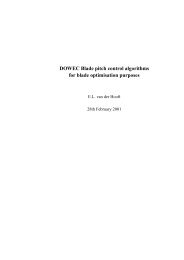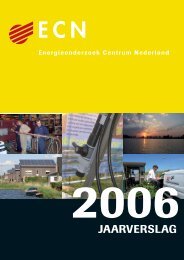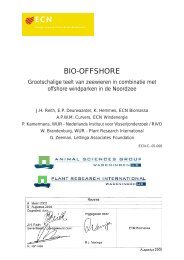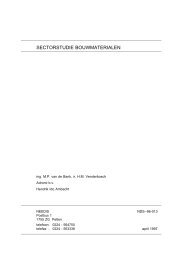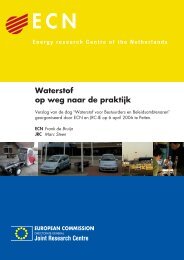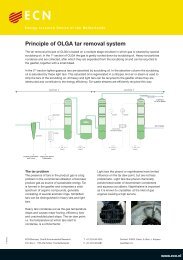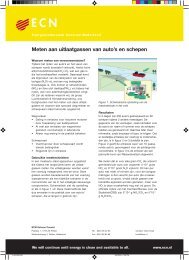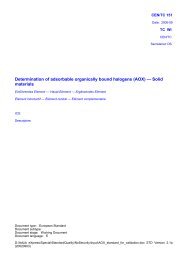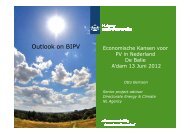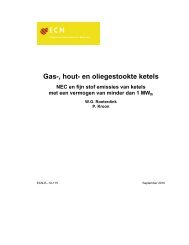PDF format (503 kB) - ECN
PDF format (503 kB) - ECN
PDF format (503 kB) - ECN
You also want an ePaper? Increase the reach of your titles
YUMPU automatically turns print PDFs into web optimized ePapers that Google loves.
Table 1.1 First order estimate of energy and CO2 balance of packaging in Europe based on van Heijningen<br />
(1992), van Heijningen (1992a), APME (1996), de Beer et al., (1994) and van Duin (1997) 12<br />
Consumption of Packaging materials Consumption CO2<br />
Share in total<br />
(Mtonne/yr) (Mtonne/yr) CO2 emission (%)<br />
Paper 28 14 13 - 17<br />
Glass 17 6 6 - 7<br />
Plastics 12 23 - 61 28 - 56<br />
Metal 6 15 14 - 18<br />
Others (incl. Wood) 13 13 11 - 12<br />
Total 75 84 - 109 100<br />
Table 1.2 Material input per packaging service category<br />
Demand Material Material Demand Material Material<br />
category input type category input type<br />
[ktonnes] [ktonnes]<br />
beverages, 252 Steel non-food 798 Cardboard<br />
carbonated 171 Aluminum 672 PVC<br />
1131 PET 260 PE<br />
15605 Glass 140 PP<br />
199 PE 10 Paper<br />
745 Board<br />
447 PS carrier bags 430 PE<br />
73 PP<br />
industrial bags 600 PE<br />
wet food 800 Glass 504 Paper<br />
188 Steel 400 PP<br />
non-food liquids 1050 PE transport 2610 PE<br />
Packaging 259 Wood<br />
dry food 2577 Cardboard 9400 Corrugated board<br />
224 PVC<br />
840 PE Pallets 4956 Wood<br />
1530 PP 840 PE<br />
47 Paper<br />
110 PET<br />
2. Material efficiency options for different packaging categories<br />
2.1 Food bottles<br />
The category food bottles is defined as all bottles, cans and jars that are used to pack food. A very large category<br />
is liquid packaging. The main liquid types that are packed within this category are dairy products, soft<br />
drinks, beer, wine and spirits. The total European consumption of these products amounted to 111 billion liters<br />
[EC, 1997]. Also preserved fruit and vegetables are important in this category, 4 billion liters in 1994 [EC,<br />
1997]. Current most used materials to pack the products in this category are glass, PET, liquid board, steel and<br />
aluminum<br />
Glass<br />
Glass bottles and jars are used to pack all of the liquid and food categories that are defined earlier. The glass<br />
bottles have had competition from other materials since a long time. Years ago, milk in The Netherlands was<br />
sold in glass bottles but today the major packaging used are liquid cartons [van der Ent, 1995]. In the soft-drink<br />
sector, a similar situation occurred. For a long time only glass was used while today PET bottles have taken a



